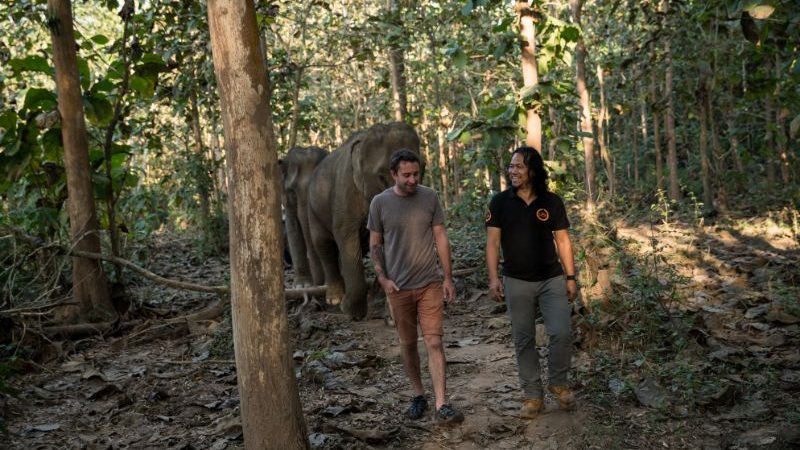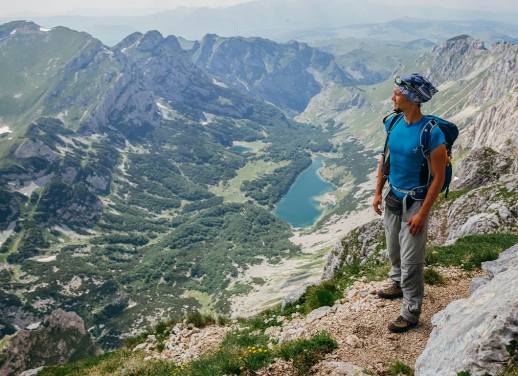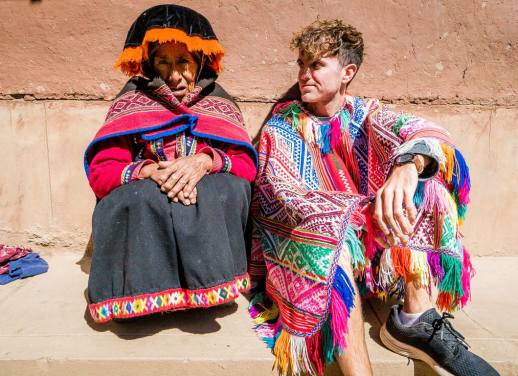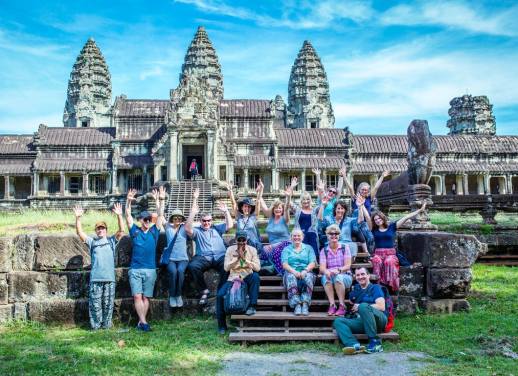This article was written by Kira Day on behalf of The Intrepid Foundation.
On my first trip to Thailand, I tagged along on a tour group visiting an elephant camp. A bushel of grass in one hand, an iPhone in the other, I circled the feature baby elephant to prepare for the perfect shot.
Here it was: one foot forward, his trunk lifted up like a trumpet, blaring as to announce his excitement. The snap – perfection by my amateur standards – was going straight to Facebook. But first, I clicked the edit tool; I dragged the corner up, and cropped out the rusted chain attached to its front right ankle. Chains don’t make for a nice photo. They don’t make for a nice reality either.
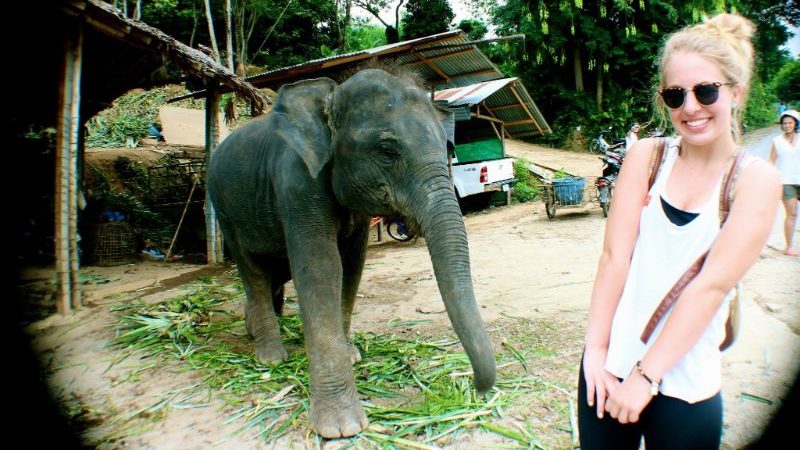
At the time, I thought this was the perfect photo. Photo by Kira Day.
Although the demand for elephant rides has declined in recent years, the practice is alive and well in many places. The problem isn’t travellers; they’re usually unaware of the pain that a short ride inflicts on elephants. (I, too, went on one at that same camp). The responsibility is on the businesses profiting from the practice to stop it. But tour operators and travellers have the power to make that happen faster.
FIND OUT MORE ABOUT INTREPID’S STANCE ON ANIMAL WELFARE
Years after my first – and last – elephant ride, I visited an elephant sanctuary in Northern Laos. It was more remote than the camp, with a ride on a motorised long boat to finish the journey, and for good reason: the river secludes the elephants from the bustle of human life. The water is part of their playground, and the lucky traveller can catch the giants taking a dip.
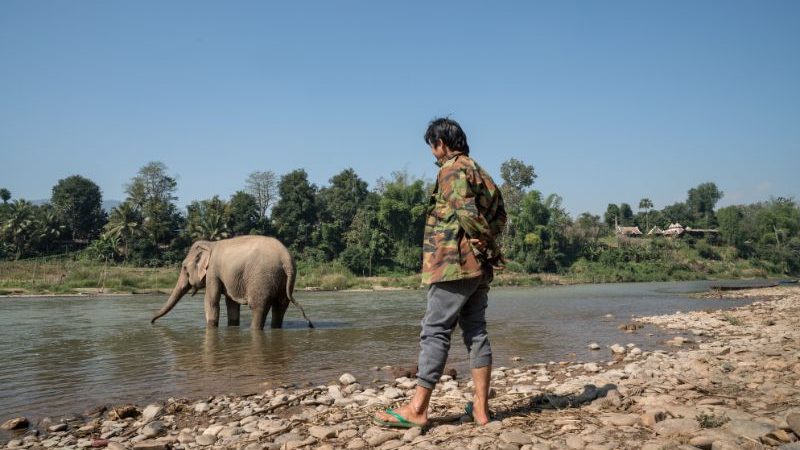
On the banks of the river. Photo by MandaLao Elephant Conservation.
On the banks of the Nam Khan River, MandaLao Elephant Conservation spans around 200 hectares of forest. Each of the 11 elephant residents has a history of demanding physical labour, from logging to long days of giving rides to tourists. But here, they’re free to feed naturally and wander the forest.
RELATED: THIS IS WHY WE NO LONGER RIDE ELEPHANTS
MandaLao opened in 2016 as the first non-riding elephant sanctuary in Luang Prabang, Laos. With support from World Animal Protection, they’ve grown to accommodate 11 elephants and their mahouts comfortably. It may be a venue for tourists, but it also offers plenty to the surrounding community. Local residents stay involved in the project by growing crops for the elephants, leading tours for visitors, and building the new night enclosures.
But what makes MandaLao different to the other (less remote) sanctuaries in Laos?
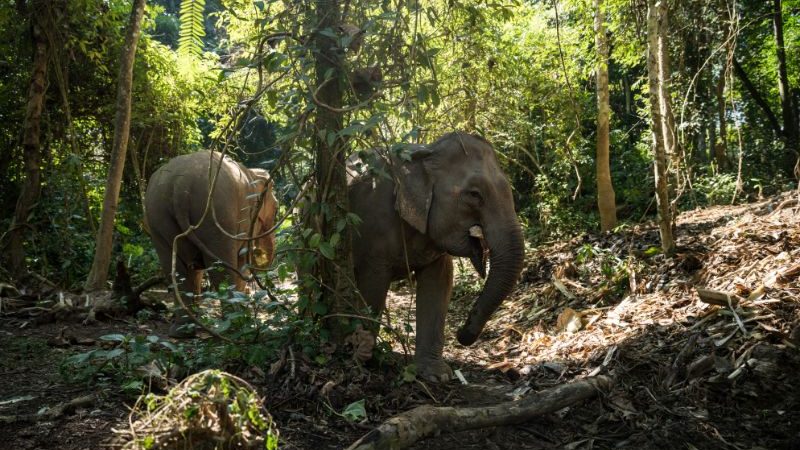
Playtime in the jungle. Photo by MandaLao Elephant Conservation.
People love elephants, and they want to get as close as possible. They want to sit on them, and experience their slow amble through the hillsides. A selfie requires elephants to stay in one place; free-roaming elephants don’t allow for a line of tourists to get the signature snaps. Demanding these things from elephants means that they stay on one-metre chains, wear uncomfortable saddles, and have their endurance pushed for profit.
VISIT MANDALAO ON ONE OF THESE SMALL GROUP ADVENTURES
But at MandaLao, there are no chains necessary. Tourists can join in on the elephants’ daily routine – and even feed them a few bananas along the walk – but they’re mostly there to observe. Numbers are limited to give elephants the space and rest they need (and deserve). All around, it makes for a more ethical experience.
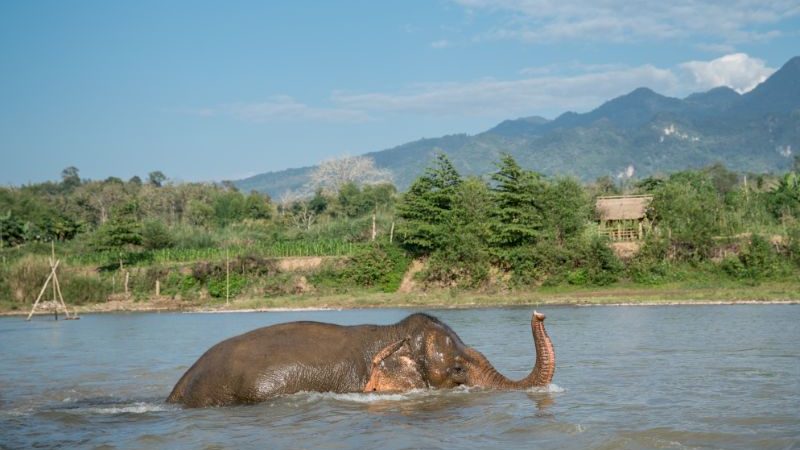
Having a quick swim. Photo by MandaLao Elephant Conservation.
Keeping elephants in an enclosure seems impossible without chains, and even the mahouts (elephant handlers) had their doubts. Michael Vogler, the co-founder and owner of MandaLao, wanted to prove them wrong.
SUBSCRIBE TO INTREPID’S NEWSLETTER FOR TRAVEL STORIES, COMPETITIONS & MORE
“The chains have been such a big part of their lives for decades. One of our elephants is about 55, so she’s been on a chain for 50 years,” he explains.
“We built a small fence that the elephants could easily break through and escape if they wanted to, but it was almost symbolic. The next morning, I’d never seen the elephants so happy and relaxed: ears flapping, tails swinging, walking around and socialising. Just that small step of getting rid of the short chains makes such a difference in the elephants’ lives.”
With the support of The Intrepid Foundation and World Animal Protection, MandaLao hopes to build a spacious night enclosure for the elephants. It will allow them to go chain-free, but prevent the clumsy giants from straying into private land. Accommodation for mahouts will also be part of the enclosure, to ensure the elephants have around-the-clock care.
READ MORE ABOUT THE INTREPID FOUNDATION HERE
Once you’ve seen elephants in the wild – as they should be – it’s hard to imagine them in chains. Don’t get taken for a ride; show your love for elephants by supporting ethical sanctuaries that let them roam free.
The Intrepid Foundation is the not-for-profit arm of Intrepid Group, helping travellers give back to the places they visit. Since 2002, the Foundation has raised more than $7.5 million dollars for over 125 organisations around the world. From empowering vulnerable youth to helping refugees get back on their feet, The Intrepid Foundation supports life-changing projects that make places better to travel to and live in.
Feature image by MandaLao Elephant Sanctuary.

